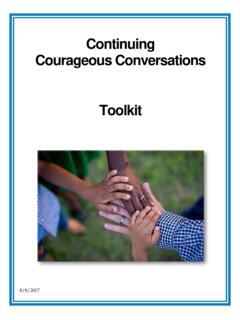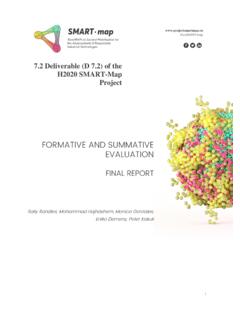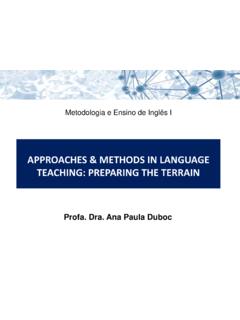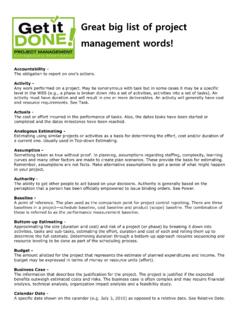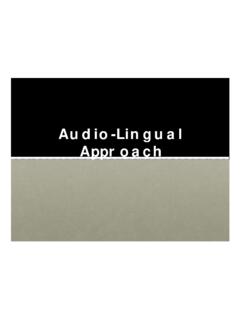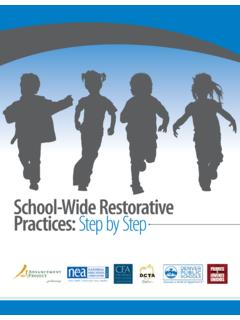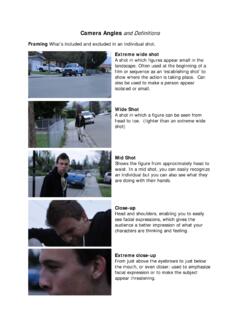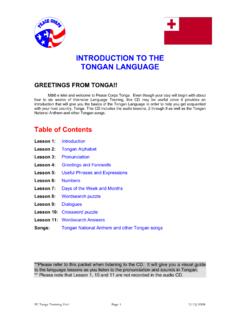Transcription of Cree: Language of the Plains - University of Regina
1 Cree Language of the Plains nehiyawewin paskw wi-p kiskw win Language Lab Workbook Cree 100 & Cree 101. Cree Language of the Plains nehiyawewin paskw wi-p kiskw win Language Lab Workbook Cree 100 & Cree 101. Jean L. Okimasis Unless otherwise noted, Cree: Language of the Plains , Language Lab Workbook is 2018. Jean L. Okim sis. This publication was produced by University of Regina Press and is licensed under a Creative Commons Attribution-NonCommercial-NoDerivatives International License. See Under the terms of the cc by-nc-nd license, you can download and share this book with others, in either digital or print form, as long as you provide attribution to Jean L. Okim sis as the author of this text and do not change this book or the text in any way, or use it, in part or in whole, for commercial purposes.
2 Additionally, if you redistribute this textbook in either a print or digital format, then you must retain the following attribution in the redistributed material: Download this book by Jean L. Okim sis for free at For questions regarding this license and publication, please contact ca. To learn more about University of Regina Press's Open Textbook Publishing Program, visit Cover image: Powwow at the Battlefords is Allen Sapp. All rights reserved. This image is used with the permission of the Estate of Allen Sapp and is not covered by the Creative Commons license used in this book. Cover and text design: John van der Woude, jvdw Designs Library and Archives Canada Cataloguing in Publication Okim sis, Jean L., 1938-, author Cree : Language of the Plains = n hiyaw win : paskw wi-p kiskw win / Jean L.
3 Okim sis. " Language Lab Workbook, Cree 100 & Cree 101." Supplement the open access textbook Cree: Language of the Plains . Includes text in English and Cree. isbn 978-0-88977-630-2 (pdf). 1. Cree Language Textbooks for second Language learners English speakers. 2. Cree Language Problems, exercises, etc. 3. Problems and exercises. i. Title. ii. Title: n hiyaw win. 2018 Suppl. 497'.3 c2018-904763-1. University of Regina Press, University of Regina Regina , Saskatchewan, Canada, s4s 0a2. tel: (306) 585-4758 fax: (306) 585-4699. web: Funding for University of Regina Press's Open Textbook Publishing Program and all publications in this program was generously provided by the Government of Saskatchewan. Contents Foreword vii Introduction ix Cree 100. Lab Session 1 Sounds and Pronunciation, Minimal Pairs, and Possession 1.
4 Lab Session 2 Nouns, Imperatives, Numbers, and Greetings 7. dialogue : Greetings 12. Lab Session 3 Greetings, Nouns (Singular, Plural, and Diminutives), and Numbers 15. dialogue : Greetings Introducing Someone 15. Lab Session 4 Negative Imperatives, Diminutives, Verbs, Locatives, and Prepositions 24. Lab Session 5 Greetings, Interrogatives, and Demonstrative Pronouns 33. dialogue : Studying Cree 33. Lab Session 6 Imperatives and Independent Mode, Affirmative and Negative Statements, Polarity Questions, and Locatives 42. dialogue : Lunch Time 48. v . nehiyawewin: paskwawi-pikiskwewin waseyawiskwew Lab Session 7 Preverbs and Inanimate Intransitive Verbs Weather, Days of the Week, and Seasons 50. Lab Session 8 Animate Intransitive Verbs and Pronouns, Months, and Dates 59.
5 Lab Session 9 Animate Intransitive Verbs (continued), Independent and Conjunct Modes 66. Lab Session 10 Third Person, Future Conditional, and Vital Statistics 72. Lab Session 11 Review of the Audio Labs in Cree 100 77. Cree 101. Lab Session 12 Animate Intransitive Verbs (vai) and Calendar Dates 79. dialogue : Travel 82. Lab Session 13 vai and vii in Independent and Conjunct Modes and Future Conditional Form, Weather Terms 88. Lab Session 14 Transitive Animate Verbs (vta) Singular and Plural Objects 96. dialogue : Visiting Friends 99. Lab Session 15 Possessive Form for Singular Animate Nouns, Kinship Terms, and Interrogative Pronouns 101. Lab Session 16 Transitive Inanimate Verbs 107. Lab Session 17 Conjunct Mode 112. dialogue : Conversation with Family 115. Lab Session 18 Inverse Form and vta with Plural Objects 116.
6 Lab Session 19 Time 119. dialogue : Talking about Time 122. Lab Session 20 Reflexive Forms 125. Answer Key 130. About the Author 143. vi Foreword This Language lab workbook and corresponding recordings have been designed to complement and supplement the Open Access textbook Cree: Language of the Plains , which has been redesigned and updated as an introductory study of the gram- matical structure of Cree. The Language lab sessions attempt to build on that information by presenting drills, exercises, and dialogues to reinforce topics in the textbook. These exercises are not meant to be used entirely on their own to teach Cree but this workbook may serve as a starting point and can be used along with other worksheets and activities. The Cree Language is rich in verb forms, which require agreement with all other grammatical features within a sen- tence.
7 Note that in both the textbook and the Language lab material, nouns, pronouns, and verbs are presented as ani- mate or inanimate, while verbs are also classified as transi- tive or intransitive (depending on the number of nouns or pronouns referred to). Grammatical agreement between verbs, nouns, and pronouns is required. The precise nature of the Cree Language also dictates that many verbs, nouns, and particles must be introduced in the lan- guage lab material. The Language lab sessions and workbook and the textbook complement each other through vocabulary and the grammatical rules that dictate the use of the right particles. vii . nehiyawewin: paskwawi-pikiskwewin waseyawiskwew In the textbook, Appendices B and C contain noun and par- ticle vocabulary lists while Appendices D and E contain verbs.
8 Ultimately these appendices provide students with diverse vocabulary from which to choose when composing Cree sen- tences. Both the textbook and the workbook aim to teach the same information about the structure of the Cree Language . Those studying Cree will experience the precise nature of this Language in all its forms: nouns, pronouns, and verbs in their conjugated forms. The standard roman orthography (sro) is used throughout this book. As a student of Cree, and probably because I am a speaker of the Language , I was amazed that only ten conso- nants and seven distinct vowels are required to elegantly spell Cree vocabulary. The short vowel sounds of spoken Cree are represented by a, i, and o, while , , , and represent long vowel sounds. There are also ten consonants: c, h, k, m, n, p, s, t, w, and y.
9 I immediately realized that the sro indeed represented the sounds and the syllables of my Language . The wide range of vocabulary, especially the verbs, and the rich grammar were endless but precise. This was the beginning of my journey towards a work that respectfully presents the beautifully constructed Cree Language , n hiyaw win. Jean L. Okim sis viii Introduction This Language lab workbook has been organized to complement and support the grammatical material presented in the accom- panying Cree: Language of the Plains textbook. Each lab session, drill, and exercise in this book is accompanied by a cross-ref- erence to the open textbook where you can find a detailed explanation of the specific Cree structure being demonstrated. Language lab sessions are presented in order of increasing difficulty and each new session builds on the previous ones.
10 Therefore, you are encouraged to undertake the sessions in the order they are presented. Structure and Features The Language lab sessions have been divided into two sections: Cree 100 and 101. This essentially follows the two halves of the introductory Cree course taught at First Nations University of Canada and elsewhere. Common features in each lab session include drills, dialogue , additional vocabulary, spelling, and the occasional written exercise. How to Use the Audio Component In order to best use this Language lab workbook, follow the instructions given for each drill or exercise. General instruc- tions related to the audio component are outlined as follows. ix .. nehiyawewin: paskwawi-pikiskwewin waseyawiskwew Specific instructions for the exercises and dialogues are also given in the Language lab sessions.


